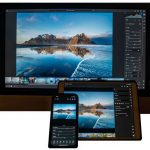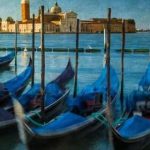
It was 1899 and I was Edgar Degas
Not all my favorite quotes have been said by photographers. There have been several that have been said by painters, writers, and musicians, all artists in their own right.
After recently reading an article about the work Helen Keller did, I started reading some of her quotes, and one in particular stood out to me as having a profound effect on not only my photography but in my teachings as well.
First, it’s important to give you the true meaning of the word Vision since several of my online students with the BPSOP, and my “Stretching Your Frame of Mind” workshop participants can sometimes confuse a word that actually might mean something else; something I have done from time to time.
[vizh–uh n]
noun
1. the act or power of sensing with the eyes; sight.
2. the act or power of anticipating that which will or may come to be.
3. an experience in which a personage, thing, or event appears vividly or credibly to the mind, although not actually present, often under the influence of a divine or other agency: a heavenly messenger appearing in a vision.
4. something seen or otherwise perceived during such an experience: The vision revealed its message.
5. a vivid, imaginative conception or anticipation.
Btw, I like number three, but so far after nearly fifty years of being a photographer, I’ve never had a heavenly messenger appear in my composition as a vision; which is unfortunate.
Helen Keller said, “The only thing worse than being blind is having sight but no vision”.
One would have to agree that vision is imperative and what fuels the engine that pushes creativity forward. The sad part is that with the coming of the digital age, some of my fellow photographers don’t rely on their personal vision, instead they count on their computer to create their imagery which over time will make them really good computer artists…and if that’s your thing, to each his own.
What the computer can do is important to this new age, and it should never be said that I don’t appreciate it, but to me it should be used to add the finishing touches, i.e., contrast, lighten or darken, occasional sharpening, etc.. Those things that can enhance an already strong photo made before the shutter is depressed.
This is where vision comes into play, and what you can do to create strong images before the fact. This is all about definition number two, and what I want to write about: “the act or power of anticipating that which will or may come to be”.
There are photographers (great photographers) out there, many of them teaching that photograph what they see and never looks for anything else. In other words what is will always be just that. To add or alter anything when composing is strictly against their beliefs, and to that they call themselves purists.
The funny part is that they have no compunction when it comes to sitting in front of their computers and altering the light, color, saturation, shadows, and some even apply some weird trick they picked up in one of the thousands of plug-ins available to them; and then there’s the crop and straightening tools!!!!!
Since I’ve never cropped one of my photos in nearly fifty years I can’t even or don’t ever want to think about that…but I digress.
Don’t photograph what is, photograph what could be, and that’s what my definition of vision is all about. I’m not talking about vision in Fine Art photography in this context, which I plan on talking about in upcoming posts. I’m talking about images that exist in nature and are readily available for all to see if you set your mind to seeing them. This is the kind of vision I’m talking about.
You can actually practice in your spare time!!! How???
Suppose you’re walking down a pier very early one sunny morning and you immediately stop to take a photo of a Vanishing Point created by the converging lines of the two sides of the railings extending out from either side of you.
Without any hesitation you quickly take the shot and now you have created a photo that via a Vanishing Point, leads the viewer down to the end where the two lines meet on the horizon exactly where the sun is coming up; a great photo by all accounts.
Now, you’re standing there and if you’re like me you wish that there had been a fisherman at the end of the pier, silhouetted against a warm, soft, and beautiful sun minutes after breaking the horizon.
Or what if you were walking in a park late one Fall afternoon and you noticed a bench next to a winding path covered with leaves painted by mother nature with every color known to happen during the peak days of Autumn. You bring your camera up to your eye and take a picture; another good photo albeit fairly predictable.
Again, if you were like me and were on your knees up close and personal to the texture and patterns of the leaves, you might have wished there was an elderly couple sitting at the other end of the bench feeding a group of pigeons that were milling around next to their feet.
These are the thoughts that are always running through my imagination when I’m out shooting. I think of various scenarios because it’s a way of exercising my mind, because you just never know when an opportunity might come up. An opportunity that will change a good photo into a special one.
In the above photo, While shooting in Cuba I saw this woman just finishing up posing for other photographers in an old house. I immediately envisioned Degas paintings of the ballerinas. At that memorable moment I led her into another room, had her sit and take off her slippers; it was 1899 and I was Edgar Degas.!!!
Give it a try sometime. Think of yourself as a painter instead of a photographer. Your camera on tripod is a blank canvas on an easel; use it to color outside the lines.
-BPSOP Instructor: Joe Baraban
Joe Teaches:
Stretching Your Frame of Mind I
Stretching Your Frame of Mind II
















